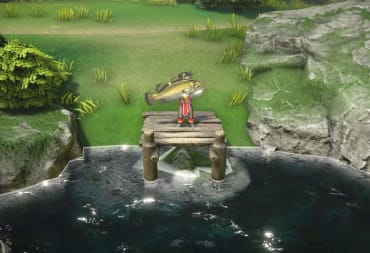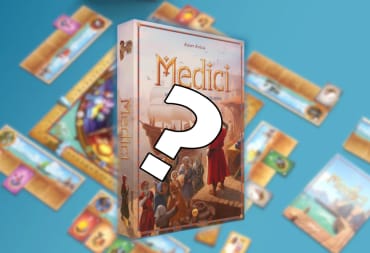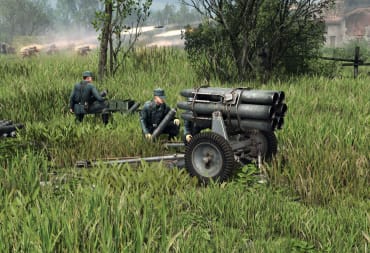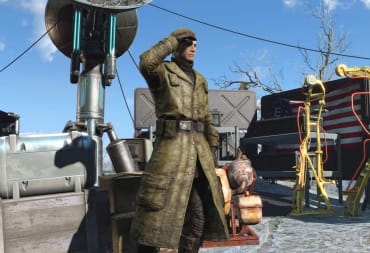With the release of Fallout 4’s new and improved survival mode, we have seen the game take on a whole new life and playstyle that is quickly catching the attention of Fallout fans. Survival mode is the hardcore, survivalist standard that only a series like Fallout can bring us; the implementation of hardcore mode in Fallout: New Vegas for example, was a great addition that added layers of complexity to a playthrough that changed the face of the entire game. The Fallout 4 survival mode tries to up the ante further, creating a simulation environment for the first time in the RPG series.
This is mostly achieved by eliminating all saving and fast travelling, something the New Vegas hardcore mode didn’t have. It is now a strategic challenge in Fallout 4, a chance to really show your abilities to survive the harsh conditions of the Commonwealth wasteland. With Far Harbor also being released, it is a chance for players to get into their groove before exploring a new zone, provided they have the skill and patience to contend with survival mode.
Yes, survival mode is not for everyone, but for anyone willing to attempt it, here are a couple of simple tips to keep in mind as you go through the Commonwealth with survival mode intact. Some of these tips are general hints and ideas, and of course do not have to be taken as the only way to play survival mode; ultimately the beauty of Fallout 4 is how you adapt your playstyle to the game's environment. In general, these tips and hints are good guidelines to at least consider, to maximize your success rate in survival mode.
Before we get to the general hints, a couple of things need to be noted about the changes survival mode brings. Fallout 4 was always a deadly game if you were unprepared, but most players would acclimate to the rhythms of combat and stealth quite easily with stat gains, perk builds, and resource management. The changes made in survival mode mandate a different rhythm all-together to be successful, which means players need to tweak their play-style slightly to be more effective.
The biggest changes are as follows:
- No more auto-save or save anywhere, can only save your progress at a bed or mattress.
- There is no fast travel.
- Player health and AP regenerate at a slower pace when using stimpacks, food, water, or chems.
- Players can become fatigued, hungry, or thirsty. In addition, you can also contract diseases that affect your health, stats, or a combination of both. Note that if you are hungry or thirsty, you will not regenerate health until those conditions are met.
- Carrying capacity is greatly reduced, and ammunition now has weight.
- Companions will leave you if they drop and you don’t heal them with stimpacks or robot repair kits. They will no longer automatically revive after combat.
- The player and enemies take more damage, making firefights and combat quicker and bloodier.
All of these changes can be addressed or countered in a few ways in Fallout 4. Some, the player has to monitor on its own, while other obstacles can be compensated through in-game perks or abilities. With this all in mid, here are some tips to consider while you play survival mode.
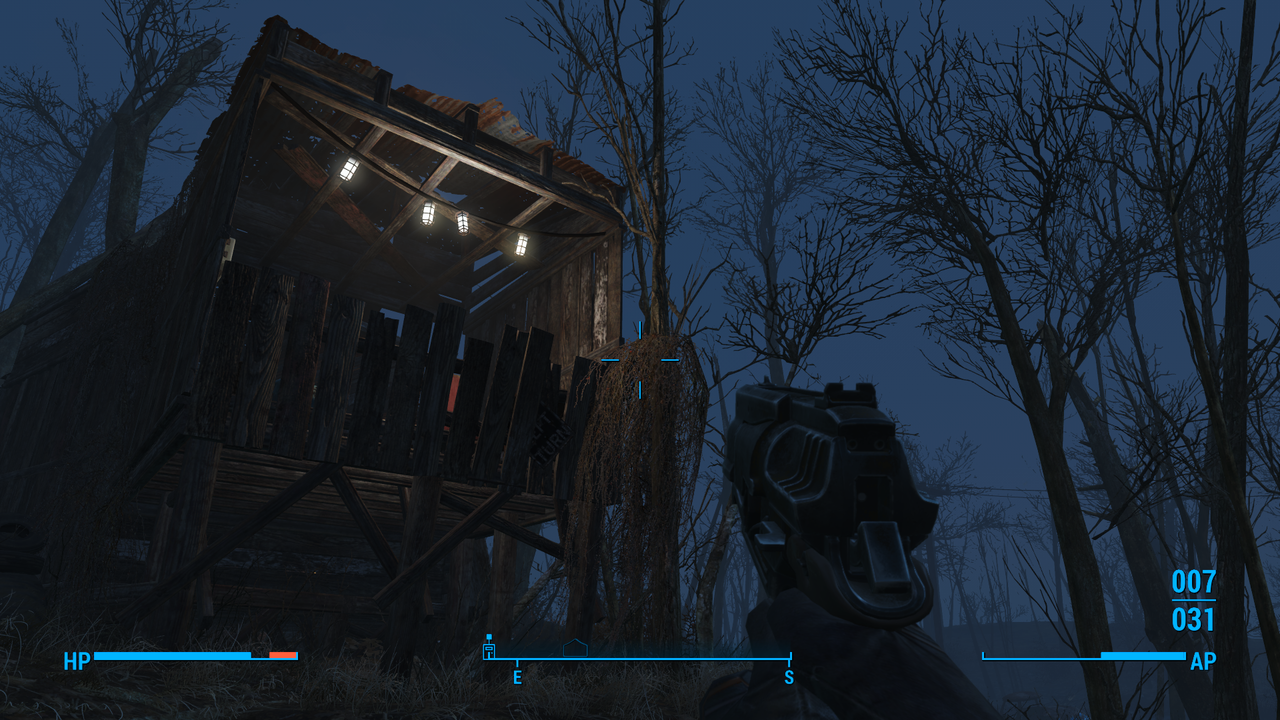
Slow and Steady Survives the Day
Survival mode in Fallout 4 is not Doom; playing fast and loose, and relying purely on reflexes when in a combat situation will get you killed quickly. The new damage mechanics turn firefights into a very deadly proposition. If you are exposed without cover or caught off guard by enemies, you will likely die.
The new rhythm of survival mode is one of patience and planning; rushing in to attack will lead to certain death, but slowly creeping up or using cover to your advantage can give you an edge. Find chokepoints or defensible positions, use stealth or hit and run tactics. Also, don’t be afraid of multiple enemies at once—as long as you know where they are, you can at least assess the situation before rushing in guns blazing.
To that end, sometimes simply planning your approach is the key to surviving combat. Players should still be aggressive when it comes to combat but not reckless—fight knowing you have an advantage. If you are ambushed, retreat to live another day as well; there is no shame in admitting defeat in those type of situations.
This also should change how you view the world of Fallout 4. You should pay attention and plan your routes carefully, even take it slow and travel with caravans or passers-by along the roadways from time to time. It may be a slow pace, but there is great safety in numbers in Fallout 4—the less raiders shooting at you, the better.
Naturally, healing is greatly affected by combat, but using stimpacks, rad X, and radaway actually give negative benefits if you use them now. Stimpacks make you dehydrated, and rad X and radaway make you hungry. Radaway also weakens your immune system for a short period of time, which makes you more susceptible to diseases that can be very detrimental. It is better to use food and water of all kinds, even if you get trace amounts of radiation, while saving stimpacks and radaway for emergency situations.
You need to also watch your HP throughout the game. A max 10 Endurance on your character only starts with 130 HP, and there are only a few perks and items that increase HP directly, or give you more endurance which in turn increases your HP.
If you want to go in guns blazing, however, the best way to do it is to use a ton of chems. Using chems like med X, jet, or phycho can give you a massive edge in a combat situation in that respect, but at the price of chem addiction if you are not careful or don’t pick up the required perks. It is really the only way to really compensate for the new combat mechanics and go for a quicker pace without worrying about a certain or unexpected death. It also doesn’t guarantee success in a combat situation, but it does give you better odds of survival. Ultimately the choice is yours on how to proceed with the game, but I do recommend a slower, more methodical approach overall.
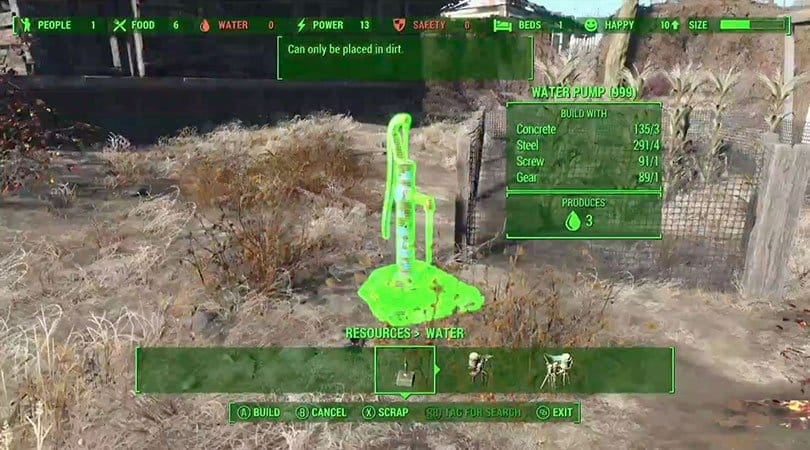
Settlement Management
Because food, water, and beds have become a major resource to take into consideration, settlement building is now paramount to survival. Any settlement you create should always carry at least one bed for yourself, one water pump to use at minimum, and a cooking and chems station, which will allow the game to be a bit easier in survival mode.
One of reasons for this is because of the new thirst and fatigue mechanics. A little trick in Fallout 4 is that empty bottles, from beer bottles to Nuka-Cola bottles, can be filled with water. While any location with stagnant water works, water pumps offer a source of purified water at your disposal, and can be built at any settlement rather cheaply, costing only 3 concrete, 4 steel, a screw, and a gear. Collect enough bottles and you can at least worry less about finding pure water in the world, which is now a scarce resource, along with food and chems.
As for beds, their importance is for saving the game, but also a rest bonus. A naked mattress only gives you about 5 hours of sleep, while a sleeping bag gives you even less-3 hours maximum. Any bed frame, however, will give you at least 8 hours of rest and the well-rested perk, which is a free 10% XP gain increase. Crafting good beds costs you 5 cloths, 4 steel and a screw, while a mattress is simply 5 cloths.
While beds and a water pump are absolute necessities at every settlement you construct, building up settlements is a whole other matter. You have 29 settlements in the base game, one home (home plate in Diamond City) and 1 DLC settlement (the Mechanists Lair in Automaton) that you can liberate, build, and fix up as you see fit. Settlements make good home bases, especially the further south you go on the game map, so I would recommend you at least gain control of every single settlement in the game at one point. Linking them together and sending supply lines throughout all the settlements will also make allocating junk and crafting materials easier, although the downside to this is how much management settlements have in the game.
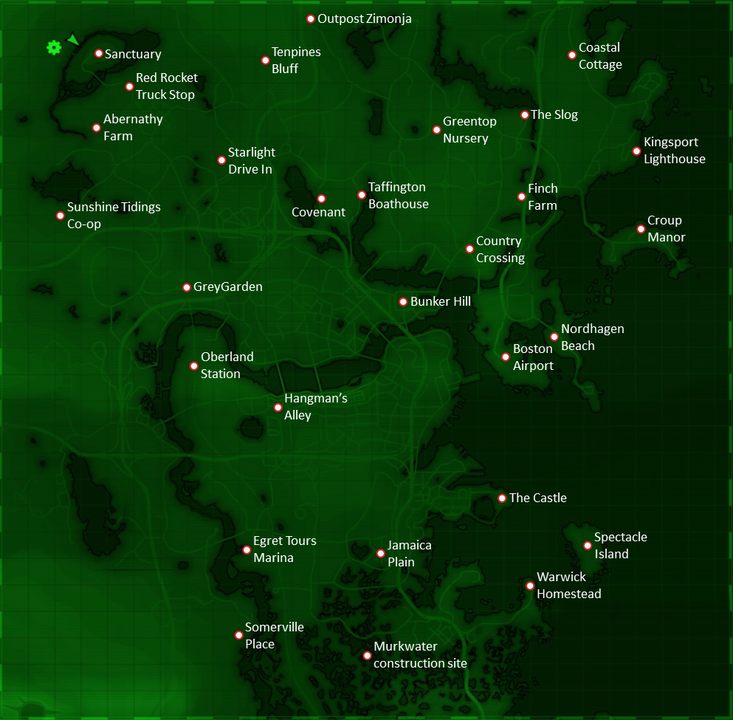
The chem and cooking stations will make food and chem production possible, as well as making foraging local flora and fauna easier. Hunting Radstag and other animals in the commonwealth is a great way of getting cheap meat, and cooking it not only gives you better health benefits or stat bonuses, but it helps you avoid diseases as well while fulfilling your hunger meter. Cooking and chem stations all have different costs, but the most important component is the local leader perk, which you need two ranks in to build them up.
For those who might not be interested in the local leader perk, the following settlements contain a cooking and a chem station, unless otherwise noted:
- Abernathy Farm
- The Castle
- County Crossing (cooking only)
- Greentop Nursery
- Hangman's Alley (cooking only)
- Nordhagen Beach
- Oberland Station (cooking only)
- Red Rocket Truck Stop
- Sanctuary Hills
- The Slog (cooking only)
- Spectacle Island (cooking only)
- Starlight Drive-in (cooking only)
- Sunshine Tidings Co-op
- Taffington Boathouse (cooking only)
- Tenpines Bluff (cooking only)
- Warwick Homestead (cooking only)
Ultimately, some settlements can be left completely devoid of any other settlers for a time, and serve as mini strongholds for the player to rest up and restock on supplies, or to store food for some later excursions in a given area. Even Home Plate, which can be purchased in Diamond City, is worth buying into so that you have a home base in the downtown Boston area to hold a bed and crafting materials.
I would personally recommend the following settlements, based on their map positions, that you use as these mini strongholds. Note that even with settlers living there, they are still good staging places for nearby areas on the map.
- Red Rocket Truck Stop
- Taffington Boat House
- Home Plate
- Somerville Place
- Oberland Station
- The Castle
- The Slog
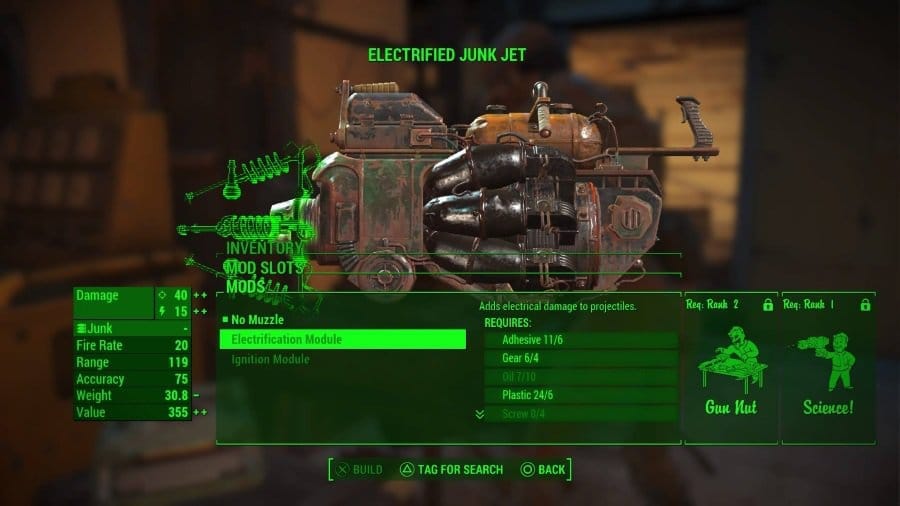
The Weight of the World
Did you know that 40 10mm rounds of ammo equals one pound of weight in survival mode? Or that a full set of heavy leather armor weighs 43.6 pounds if unmodded?
This may seem like insignificant little trivia, but knowing the weight of your weapons, items, and armor is now paramount to making it in survival mode. At rank 10 of the strength perk, your carrying capacity is only 175 pounds, which means managing personal weight and carrying capacity is vital when it comes to survival. Even companions have limited carrying capacity, so what you pick up becomes a question of priority.
In terms of what you should carry, I’d recommend a main and side weapon with armor of some kind, along with enough food and water to go with you for healing purposes. Finally, maybe carry a backup melee weapon to conserve ammo. Melee in survival mode is a high-risk, high reward way of playing the game. If you have the right perk allotments and equipment, it can be a blast. Without it, melee should either be for sure-fire stealth kills, small groups of one-two enemies, or the last resort completely. On that front, a good melee weapon to find is anything with armor piercing or bleeding capabilities or something with a high enough damage output that you can hack a ghoul quickly without ever being touched. A good choice early on is a machete, which can be found in the Concord Speakeasy in the early goings of the game, before going on to named items like Pickman's Blade, Kremvath's Tooth, or Reckoning.
Launchers also become a problematic choice in survival mode. Missile launchers and fat man launchers would not be cost-effective due to weight, so bring them with you only if you have a specific purpose for them in mind. Missiles and mini-nukes are among the heaviest ammo found in the game, at 7 and 12 pounds respectively, for only one shot apiece, so hoarding a ton of ammo for either launcher is no longer a viable option. Add to that the fact that a fat man with one mini nuke unmodded weighs a total of 57.2 pounds, it takes up a large amount of your inventory space by weight alone.
Some guns, however, fare a lot better. Some of the lightest ammo in the game includes flamer fuel and 5mm rounds, which only weigh 0.009 and 0.008 respectively, meaning miniguns and flamers, while being heavier weapons in their own right, can have an abundance of ammo at your disposal, (roughly 120 shots for the mini-gun per pound). Lastly, .38 rounds, the most common ammo in the game, is also relatively light at 0.014, making carrying a ton of .38 rounds a very solid choice throughout survival mode.
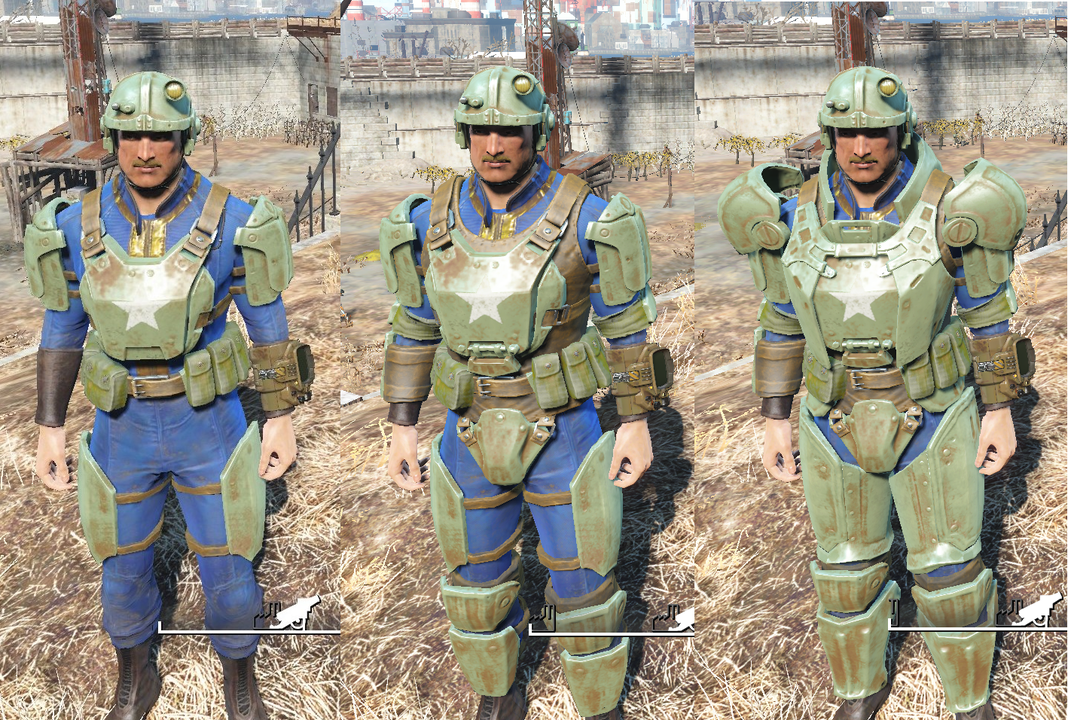
The question now is what weapons and armor to go for. To that I say it really is up to the player. Some guides out on the Internet go for damage and killing power per shot in order to maximize efficiency with weighted ammunition. Personally, it depends on your playstyle which way you want to go. I do recommend at least one long-range weapon, such as a sniper rifle of some kind—which can be modded from hunting rifles, assault rifles, laser muskets, or laser rifles—for scouting and long-range attacking, with a pistol as a backup for close-range fighting. Two-three guns with a melee weapon should give you just enough weight to haul any other finds out in the wasteland, be it junk for settlements, food or water, or goods to sell.
Armor is even trickier to nail down, as the weight constantly fluctuates based on the type and modded builds you can add to your repertoire. One tip: if you are willing to sacrifice extra protection, add pocketed armor, giving you extra carrying capacity. Combat armor is a solid, safe choice for armor pieces, weighing in at 45.5 pounds for a full set of the heavy variety and offering 101 ballistic and energy protection. It also can be found in a full set minus the helmet in Jamaica Plain, a possible stronghold location.
Power Armor is also a possibility, but keep in mind that power cores now weigh 4 pounds per core. They are also rarer in survival mode, usually only found in a few shops and in fixed locations with generators, over being randomized loot. There are no real tips for power armor, other than using a modified set with increased carrying capacity will make traversing the Commonwealth a lot easier, provided you have enough cores to make it through.
Recommended Perks
Most perks in Fallout 4 are useful, but in survival mode, a few definitely stand out as being close to must haves. The following perks I recommend players consider picking up, which will help make your time in survival mode easier to deal with. Keep in mind that a ton of perks can be useful; the recommendations here will make survival mode a bit easier on players.
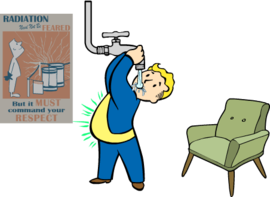 Lead Belly
Lead Belly
END Rank – 2
Considered one of the weakest perks in the game due to the abundance of stimpacks, the Lead Belly Perk gains a lot of use and prominence because it can be obtained at relatively low levels, stimpacks are rarer and less useful, and consuming food and water is now vastly more important. The first two ranks give you increasingly less rads for eating uncooked meat, dirty water, or processed food. The third rank, achievable at level 20, gives you no rads whatsoever. It is much more useful in the early part of the game than late-game play, but Lead Belly should at least get one rank in it to limit the radiation gain of consuming resources.
 Chemist
Chemist
INT Rank – 7
Chemist was always a useful perk for players who focused on drugs. In survival mode, it becomes even more prominent because of antibiotics, which is one of two ways to cure a disease or infection. To craft antibiotics you need 2 acid, 3 glowing fungus, 3 stimpacks, and 2 purified water, as well as one rank in the perk. Chemist is almost a must have, as antibiotics are scarce in general. Even doctors, the only other way to cure illnesses, carry a limited amount, making them expensive to purchase. Chemist also increases the duration of chems you take, which can help in combat situations, and has great synergy with the next perk, Chem Resistant.
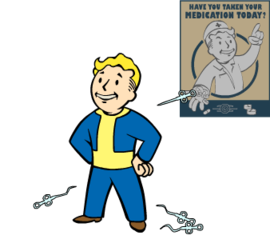 Chem Resistant
Chem Resistant
END Rank – 4
Not only does the Chem Resistant perk synergize well with the Chemist perk, it is in general useful if you plan on relying on drugs throughout survival mode. At level 22, you can gain the second rank in the perk and remove any chance of chem addiction to your character, which makes Chem Resistant a very viable choice for any character build that specializes in using drugs or more close-quarters combat. Melee characters should consider Chem Resistant, as the extra boost by jet or psycho can mean quick death before an enemy has the chance to gun you down.
 Local Leader
Local Leader
CH Rank – 6
Local Leader is a good choice if you plan on managing a lot of settlements. While it is possible to keep them as mini-strongholds as mentioned above, having provision caravans visiting your settlements is just as important, as it allows you to stock up on supplies to build what you need with relative ease. The second rank also gives you the ability to build workstations and stores in your settlements, provided you have the caps, manpower and resources. Creating these workstations throughout the commonwealth will mean you can modify or sell goods virtually anywhere you go, making long scavenging runs less of a chore.
 Strong Back
Strong Back
STR Rank – 6
A practical no-brainer, the Strong Back perk gives you an extra 25 carrying capacity at rank one, while rank 2 gives you an extra 50 carrying capacity. Since fast travel doesn’t exist anymore in survival mode, don’t take the last rank in the Strong Back perk, but definitely consider at least the first two ranks for that extra bit of weight.
 Critical Banker
Critical Banker
LCK Rank – 7
Critical Banker is an odd perk; it allows you to save a critical hit shot when using V.A.T.S. In the right moments, this can be the difference maker between life and death, so being able to save critical hits in Fallout 4 is a very powerful method of maximizing damage. I recommend filling the entire perk out if you can, which is done at level 43, as it gives you 3 stored critical shots, along with a chance for extra critical hits on top.
Now, a lot of perks can be switched out with the six above. Some other recommendations would be the Aquaboy/Girl Perk, the Action Boy/Girl perk, the Ninja Perk, and the Lone Wanderer Perk, which are all a bit more situational and dependant on playstyle, even moreso than Chem Resistant. All of the crafting perks, such as Gun Nut and Armorer, are also good choices if you plan on going the crafting/build route for the game, as is the Scrounger Perk, which will allow you to break down weapons and armor for more materials. Lastly, powerful perks like Solar Powered, Ghoulish, or Gun Fu are good choices as well, but mostly offer benefits for the later portion of the game.
Finally, don't overlook companion perks. In particular, Preston's United We Stand Perk, which gives you 20% damage resistance and +20% damage when outnumbered, and Curies Combat Medic Perk, which gives you a 100 hit point heal once a day when your health is lower than 10%, are quite useful in survival mode, but all of the companion perks are powerful if used correctly.
And there you have it. While these tips and tricks offer some degree of protection and coping with survival mode, it doesn’t necessarily make the game any easier. At the very least, some of these tips will help you in being prepared out in the wasteland of Fallout 4, making survival mode a much more fun, exhilarating experience. Good luck vault dwellers, and happy surviving out there.
Note: This article has been slightly edited to fix some minor errors.
Hope you guys enjoyed this little guide. Do you find it helpful? What other tips do you have for survival mode? Leave your comments below.
Have a tip, or want to point out something we missed? Leave a Comment or e-mail us at tips@techraptor.net


